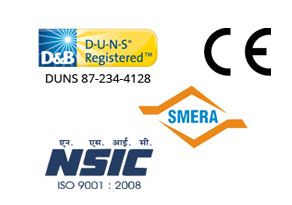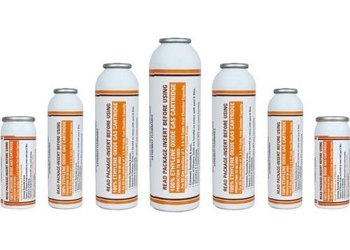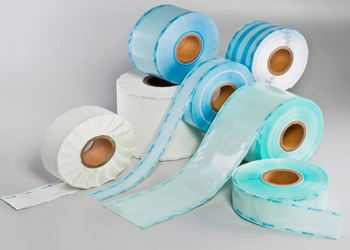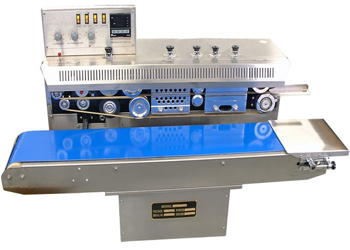Hospital sterilizer technology has long been a critical component of infection control. The COVID-19 pandemic further highlighted the importance of sterilization in hospital environments as healthcare facilities worldwide sought reliable methods to prevent contamination. With a heightened awareness of hygiene protocols and stricter sterilization guidelines, ethylene oxide (ETO) sterilization has become even more crucial in maintaining sterile conditions for medical devices and surgical tools.
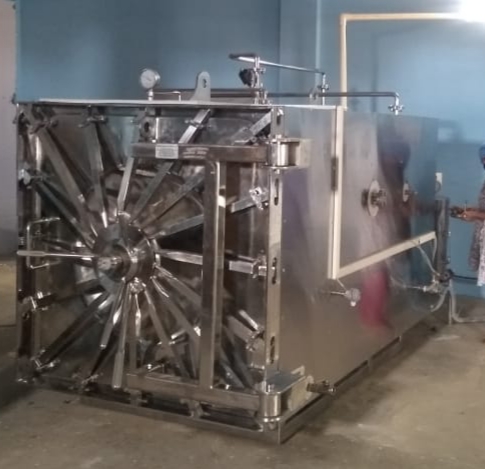
Post-pandemic healthcare requires advanced sterilization solutions that ensure patient safety, comply with international health standards and effectively handle complex medical instruments. ETO sterilizers offer a unique advantage in this scenario, as they can sterilize heat-sensitive and moisture-sensitive materials, making them indispensable in modern medical settings.
This article explores why ETO sterilization continues to be a vital part of hospital infection control in post-pandemic healthcare, how it supports patient safety and why healthcare facilities worldwide continue to rely on it in the evolving medical landscape.
Increased Demand for Sterilization in Hospitals Post-Pandemic
ETO Sterilizers Impacts Higher Infection Control Standards
Hospitals have had to strengthen their sterilization protocols due to increased concerns about hospital-acquired infections (HAIs). Post-pandemic, healthcare institutions are adopting more rigorous sterilization techniques to reduce microbial contamination and ensure sterility assurance for reusable medical instruments.
The hospital sterilizer process has evolved to accommodate new safety measures, with ETO sterilization playing a central role due to its ability to thoroughly sterilize catheters, endoscopes, surgical implants and other critical medical tools.
Expanded Use of Reusable Medical Equipment
The pandemic exposed vulnerabilities in medical supply, leading many hospitals to transition towards reusable medical devices instead of disposable alternatives. This shift requires a highly effective sterilization method, making ETO sterilization a preferred choice.
ETO sterilization ensures that reusable surgical gowns, PPE kits and sensitive electronic medical devices remain free from harmful pathogens while maintaining their structural integrity.
Meeting Global Health and Safety Compliance for ETO Sterilizer
Post-pandemic regulatory frameworks require higher sterility assurance levels for hospitals, research labs. Many global health organizations, including the FDA (USA) and CE (Europe), recognize ETO sterilization as a standard for sterilizing complex medical instruments.
To comply with global sterilization protocols, hospitals worldwide continue to integrate ETO sterilizers into their medical equipment processing workflows.
How ETO Sterilization Supports Patient Safety?
Eliminating Pathogens from Critical Medical Instruments
Post-pandemic, hospitals have increased their focus on preventing cross-contamination and surgical site infections. ETO sterilization provides an effective solution by eliminating bacteria, viruses, fungi and spores from medical devices that cannot withstand steam or high-temperature sterilization.
This is especially beneficial for:
- Implants and prosthetic devices
- Surgical instruments with complex designs
- Dialysis equipment and tubing
- Biological research tools
By using ETO sterilization, hospitals ensure that every instrument remains sterile before it is used on patients, reducing infection risks.
Safe Sterilization for Heat-Sensitive Equipment
Many hospital sterilizers use steam or dry heat sterilization, which can damage delicate medical equipment. ETO sterilization allows hospitals to sterilize materials such as plastics, rubber and electronics without compromising their functionality.
This is particularly important for:
- Endoscopes and fiber-optic instruments
- Respiratory support equipment
The ability to sterilize temperature-sensitive medical devices ensures better patient outcomes by reducing sterilization-related damage to essential tools.
Extended Shelf Life for Sterile Supplies
ETO sterilization provides long-term sterility, ensuring that medical instruments remain contaminant-free until they are used. This is especially critical in emergency scenarios where hospitals must rely on pre-sterilized equipment for immediate patient care.
Safety Considerations in ETO Sterilization
ETO sterilization Promotes Safe Handling of Ethylene Oxide Gas
Despite its effectiveness, ETO sterilization requires proper handling due to the flammable and reactive nature of ethylene oxide gas. Hospitals must:
- Ensure proper aeration to remove residual gas.
- Train staff on handling protocols to minimize exposure risks.
- Use gas monitoring systems to detect leaks and ensure safety.
ETO sterilization Offers Regulatory Compliance and Equipment Maintenance
With increasing sterilization demands, hospitals must:
- Follow ETO sterilization cycle guidelines for proper disinfection.
- Regularly maintain hospital sterilizers to ensure consistent performance.
- Keep up with changing health regulations for sterilization standards.
By implementing these measures, healthcare facilities can maximize the benefits of ETO sterilization while ensuring workplace safety.
Global Expansion of ETO Sterilization Post-Pandemic
Rapid Adoption in Developing Countries
The need for advanced hospital sterilization is growing in South Asia, Africa and Latin America. Many hospitals in these regions are upgrading their sterilization processes to meet global health standards, leading to a rise in ETO sterilizer adoption.
Increased ETO Sterilizer Manufacturing and Cost Efficiency
Due to rising demand, ETO sterilizer prices have become more competitive. More hospitals worldwide can now access high-quality sterilization solutions, improving overall healthcare outcomes.
Integration with Automated Sterilization Systems
New advancements in hospital sterilizers include:
- Automated sterilization cycles for increased efficiency.
- Reduced aeration times for quicker processing.
- Improved gas recapture systems for cost-effective sterilization.
These developments make ETO sterilization more accessible while maintaining high sterility assurance levels.

Conclusion
In the post-pandemic healthcare landscape, the role of ETO sterilizers in hospitals, pharmaceutical facilities and research labs has only expanded. Sterilization in hospital environments must meet higher safety standards and ETO sterilization remains a preferred method for ensuring sterility in heat-sensitive medical devices. With rising infection control measures, increased hospital sterilization demands and evolving regulatory standards, ETO sterilizers will continue to be an integral part of hospital infection control protocols worldwide.

